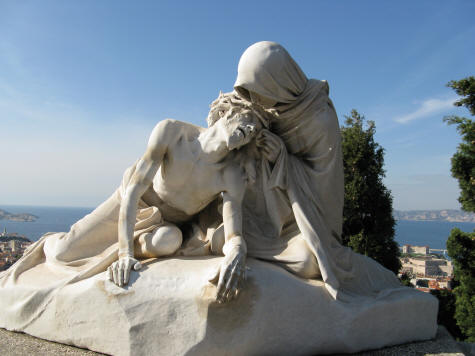Parting
There was a time I had no word for darkness,
and so I said, darkness.
I had no word to say devotion,
and so I said, Two sons grieving one mother.
A time came when our parents
sat under a tree
and cried for us, their sons
on their way to a new country.
When I try to return to my boyhood,
sometimes I end with my head on my mother’s lap.

St. Veronica gave Jesus her veil to wipe blood and sweat from his forehead as he carried his cross to his execution place. The incident does not appear in the Bible and was 1st recorded in the "Cura Sanitatis Tiberii" (The Cure of Tiberius), an appendix to the 4th-century "Gospel of Nicodemus" and was expanded upon in the 11th century with the detail that jesus gave her a portrait which she later used to cure the emperor Tiberius Caesar Divi Augusti filius Augustus. Her name is a Latinization of the Macedonian name Berenike ("Bearer of Victory"), as she is known in the Orthodox churches, but in the Catholic tradition the term "vera icon" (true image) referred to the face of Jesus that was allegedly transferred onto the cloth, and thus "Veronica" referred to the portrait rather than to the person. This confusion began with Gervase of Tilbury (Gervasius Tilberiensis) in his early 13th-century work "Otia Imperialia." His 1199 visit to Roma was the occasion of the 1st mention of the relic, which was not publicly displayed until 1207 when pope Innocentius III granted indulgences to anyone praying before it. In his 13th-century translation of the Bible into French, Roger d'Argenteuil was the 1st to link the 4th-century account with the miraculous appearance of the image on the veil, and the tradition was solidified in the enormously influential "Meditationes Vitae Christi" written anonymously by Jacobus de Sancto Geminiano, one of the heretical Fraticelli leaders in 1312.
ReplyDelete